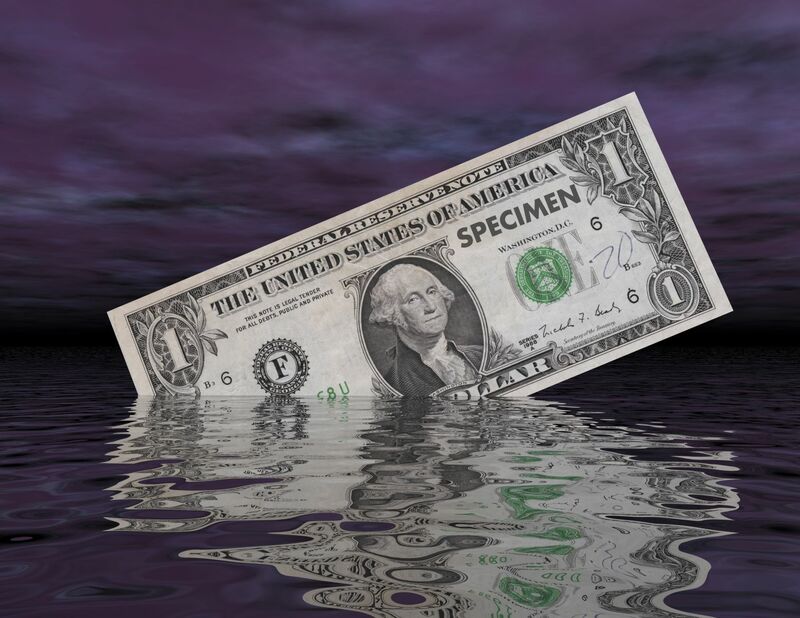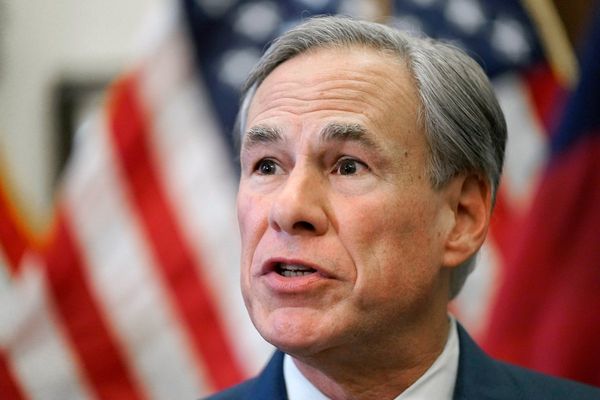
On March 30, in an article on Barchart, I asked, “Where is the Dollar Index Heading?” I ended that piece by writing, “The current short-term trend favors a test of 100, and a break could lead to much lower levels over the coming months.” On March 30, the most recent low in the index was 100.68. Since then, it has made a slightly lower low at 100.420 but has remained in the 100 to 106 range.
The U.S. dollar index measures the U.S. currency against the euro, pound, yen, C$, Swedish krona, and Swiss franc. The most significant component is the euro, as the index has a 57.6% exposure to the European currency. Meanwhile, economic and geopolitical events impact the worldwide currency markets, and the events since early 2022 may be changing the dollar’s role in the global financial system. Therefore, the index is a mirage as it only reflects the dollar’s value against foreign exchange instruments issued by U.S. allies.
A tight range continues to contain the dollar index
Watching the dollar index over the past months has been like watching paint dry.

After a highly volatile period in currency markets that took the dollar index to a two-decade high in late September 2022, the chart shows the index has settled into a 100 to 106 range over the past five months.
Bullish and bearish factors have offset to contain the dollar’s range. Rising U.S. interest rates support the U.S. currency, but inflation, the potential for a recession, debt ceiling issues, and changes in the geopolitical landscape have weighed on the dollar.
The bearish trend continues with 100 as a target
From a medium-term perspective, the dollar index remains in a bearish trend.

The five-year chart highlights the bullish trend that took the index from 89.165 in early January 2021 to 114.745 in late September 2022. The 28.7% rally that took the index to its highest level since 2002 was extraordinary for the currency market. Since the value of one reserve currency versus another is a function of interest rate differentials, the significant increase in U.S. interest rates to combat rising inflationary pressures pushed the dollar index higher over the period.
Meanwhile, the index ran out of upside steam, and after a 28.7% rally that took twenty-one months, the index corrected to the 100.42 in early April 2023, a 12.5% decline in around six months. The chart highlights the index’s pattern of lower highs and lower lows since late September 2022, which remains intact on April 25.
The fall of the dollar on the global stage
Since the dollar index measures the U.S. currency against foreign exchange instruments of U.S. allies, it does not reveal the underlying issues created by the bifurcation of the world’s nuclear powers. The February 2022 handshake between Chinese President Xi and Russian President Putin and the subsequent Russian invasion of Ukraine changed the global landscape.
Over the past year, deteriorating relations between Washington and Beijing/Moscow have weighed on the U.S. dollar’s role as the world’s reserve currency as China; the second-leading economy is challenging the U.S. for a leadership role, politically and economically. As China rises, the U.S. recedes, given the rift over Taiwan and China’s support for Russia.
The two factors that could crack the dollar index to much lower levels
At least two issues threaten to push the dollar index below the critical 100 psychological level:
- A U.S. debt default because of the debt ceiling could ignite a significant sell-off in the dollar index. The administration has refused to negotiate to increase the debt ceiling with the slim Republican majority in Congress. As the deadline nears, no compromise could push the dollar index lower.
- In a recent visit to Beijing, French President Macron signaled that Europe must remain independent and not be a “follower” of the United States. A breakdown of the historical alliance between the U.S. and France, the European Union’s second-leading economy, could threaten the dollar’s position on the global landscape. Meanwhile, any move by China to reunify with Taiwan that splinters European support for U.S. policy could undermine Taiwanese sovereignty.
Meanwhile, the trajectory of U.S. interest rates is slowing in 2023. While quantitative tightening continues at a $95 billion monthly pace, the Fed Funds Rate is 4.75% to 5.00%. The Fed’s target for the end of 2023 is 5.13%, implying only one more 25 basis point rate increase this year. Stabilizing short-term interest rates around the current level does not favor a higher dollar index in the current environment.
Significant ramifications for commodity prices
A falling dollar could have a significant impact on raw material prices. Commodities are global assets, and cross-border transactions have historically been in U.S. dollars, the benchmark for pricing energy, food, metals, and other raw materials. China recently concluded petroleum supply contracts from Saudi Arabia in non-dollar terms, and that trend looks likely to continue. As China competes with the U.S. for economic and military dominance, the international move away from dollar pricing will only increase as China is the world’s leading commodity consumer.
A weaker dollar is bullish for commodity prices, and rising raw material prices will increase U.S. inflation, only complicating debt and currency issues. The shift in the geopolitical landscape, China’s economic rise, and a divisive political environment in the U.S. support a continuation of the bearish trend in the dollar index and higher commodity prices over the coming months and years. I remain a buyer of raw materials on price dips, as bull markets rarely move in straight lines.
Moreover, Wells Fargo and Goldman Sachs analysts believe we are in the early days of a “commodities supercycle.” The dollar index may be going nowhere fast these days, but the economic and geopolitical landscapes continue to point lower for the world’s reserve currency and higher for commodity prices.
On the date of publication, Andrew Hecht did not have (either directly or indirectly) positions in any of the securities mentioned in this article. All information and data in this article is solely for informational purposes. For more information please view the Barchart Disclosure Policy here.






